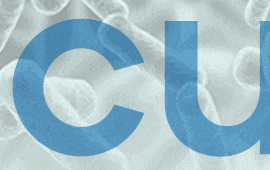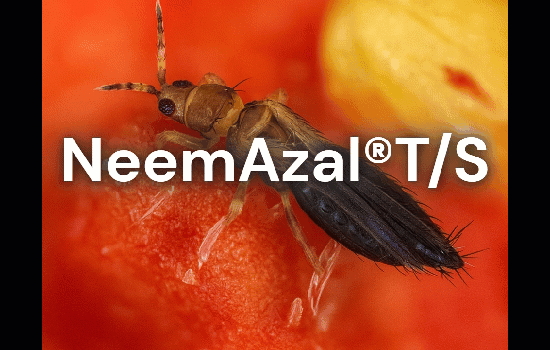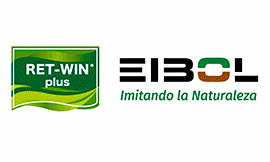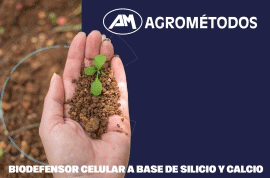The European Union is in the process of deciding on new legislation to amend Directive 91/414 which is currently regulating the placing on the market of Plant Protection Products (PPPs).
The review programme of products ingredients authorizations which was set by Directive 91/414 has already brought the number of available active substances down from 1,000 in 1993 to around 500 today, while further losses are expected from the current third and fourth stages of the evaluation.
INTRODUCCIÓN
Next to this, the substantial changes included in the proposal for a new authorization process of PPPs have raised the alarm in the farming and agrochemical industry. Initial evaluations have showed worst case scenario resulting in the ban of up to 80 % of pesticides in general, and up to 90 % of insecticides used in agriculture today.
Therefore it is of utmost importance that the possible impact of the legislative proposals be evaluated and considered before adoption new regulatory provisions that could have large negative impacts on Europe?s agriculture and on food supply.
Background ? agricultural production needs
Nowadays agriculture is facing a growing challenge, considering the demand structure and the production conditions.
The food demand in particular is constantly increasing in terms of both quantity due to the population increase, and in quality due to improved incomes and shift in dietary habits. The World Bank estimates that one hectare of land will need to feed 5 people in 2025 whereas in 1960 one hectare was only required to feed 2 people1.
Together with the new political goals for increasing biofuel production, these conditions will require an increase in agricultural production and at the same time will increase demands on natural resources. Meeting this demand can be achieved either by bringing more land into production and/or by increasing yield, but meeting the needs will be difficult if the availability of plant protection products is put into question.
Proposal for a new legislation - The ?Pesticides Package?
Changes to update the existing legislation concerning pesticides in the EU were presented by the European Commission in July 2006 along with a Thematic Strategy. The proposed ?package? consists of two separate pieces of legislation: on the one hand, a new Directive on the sustainable use of pesticides, and on the other, a proposal to replace Directive 91/414/EEC regulating the entry on the market of agrochemical used by European farmers.
The proposal of a new European Directive on the sustainable use of pesticides was motivated by the lack of a specific legislation at the EU level to control the use of plant protection products. While the initial proposal focuses largely on improving training and proper controls of equipment, the Parliament has added measures, mainly to set political use reduction targets at national level.
The proposal to replace Directive 91/414 adds further criteria into the process which will lead to the removal (or "cut-off") of certain substances. This is on top of the current authorization process for pesticides which is already one of the most stringent in Europe. After the first reading in both the European Parliament and the Council, the text is now entering a second reading at the Parliament.
Proposal for a new legislation - Hazard based cut off criteria
In the proposal to replace Directive 91/414/EEC, a major new hurdle, and a key concern for the agricultural sector is the likelihood that many more products will be lost from the market ? with the European Commission proposing to add hazard based cut-off criteria, such as CMR 1&2, endocrine disruption and POPs, on top of the onerous risk assessment process that already exists. Moreover, more PPPs would be lost through the proposed regulatory substitution of products when better alternatives exist, which will reduce the diversity of PPPs and lead to increased resistance of pests.
The European Parliament added further cut-off criteria in its first reading, such as immunotoxicity, neurotoxicity and bee toxicity; while the Council confirmed in general the criteria proposed by the Commission.
The European Crop Protection Association (ECPA) argue that the proposed criteria, based on hazard only, have a wrong basis. It should be remembered that already today, PPPs are heavily regulated, closely monitored and have been evaluated as safe by Governmental bodies when used as intended. Currently, before being able to enter the European market, PPPs must undergo strict testing, consisting in evaluating both the substance intrinsic properties (hazard) and evaluating the levels to which people or animals are exposed, and to conduct a risk assessment. Clearly, when there is no exposure there can be no risk, regardless of the properties (hazard) of the substance concerned.
Following this argument, ECPA believes strongly that the decision on the introduction of further criteria needs to be analysed thoroughly, considering the severe consequences that the proposal as is currently stands is going to have on European agriculture, the food industry and on consumers? dietary choices.
Impact of the proposed new legislation
Farmers and crop protection industry fear a severe impact of the proposed regulation on the European Agri-food sector. The ban on some of the main active substances will leave very few alternatives to continue growing affordable and high-quality crops to meet demand for fresh fruit and vegetables.
Unfortunately, the consequences of this new legislation have not been fully evaluated by the European Commission and ECPA has consistently requested that such an analysis be carried out. Unfortunately, the Commission appears unwilling to carry out such a detailed assessment.
But a number of independent impact assessments have been performed at local level which have provided a very important input into the discussions.
For example, the Pesticide Safety Directorate (PSD) evaluates that Commission proposed criteria could lead to the loss of up to 15% of currently available plant protection active substances, and Parliament proposed criteria could lead to the ban of up to 85% of PPPs2.
In addition, the UK based consultancy ADAS3 estimated that Commission criteria could lead to the loss of 25% of yields in the UK, ad Parliament criteria could lead to the loss of up to 45% of yields. The assessment underlines also the need to increase land used to maintain the current production, the need for strategies against resistance, the decrease of food supply security, as well as the loss of weed control on wheat and the lack of pest control on brassicas.
The Italian economic research institute Nomisma4 has also assessed the impacts and have suggested that the loss of production would be 50% for potatoes, 27% for wheat and 22% for cereals.
The current proposals for a new pesticides legislation would therefore have a very direct and strong impact on European economic stakeholders:
At farmers level, the new legislation will, through the ban of a large number of currently available PPPs, leave very few tools to protect crops against pests and diseases that reduce yields. Regardless of the use of pesticides, 20 to 40% of all the crops cultivated in Europe is lost every year due to the agronomic conditions.
The European legislators should take into consideration that farmers are very well aware of the need to evaluate when to apply a treatment, in order to limit the effect on the environment as well as their production cost - which include the price of PPPs.
The environmental impact is also a major area of concern also among farmers.
By using only the few remaining pesticides, crops will develop resistance to certain pests and insects that ironically will only be feasible to cure by increasing the dosage of the few pesticides left.
At the same time, increasing problems are being seen with illegal imports of pesticides. These products do not obey the current strict EU quality criteria and a key concern is that with the loss of many legal products, many farmers will have no available solutions and will consider illegal crop protection solutions in order to protect their incomes.
Ultimately, the ban is likely to result in greater importation of the food Europeans eat. Ironically, these crops are likely to have been produced using many of the pesticides the Directive proposes banning. Such a situation will only benefit farmers from outside the European Union.
At consumers level, innovative products for today?s modern agricultura are vital to produce enough good-quality foods to meet demand and dietary needs. The ban will likely result in increased production costs and reduced yields, and hence in increased food prices. This is an essential issue at a time where consumers concerns are becoming more and more important regarding their purchasing power and the food prices increase.
The need for a balanced regulation on PPPs
A balanced regulation requires a proportionate approach which considers the longer term benefits as well as the perceived risks so that productivity needs can be balanced with environmental objectives. Therefore it is essential to evaluate and consider the impact of the current proposals before taking any decision that could jeopardize European agriculture?s sustainability and competitiveness.
Comprar Revista Phytoma 203 - NOVIEMBRE 2008













